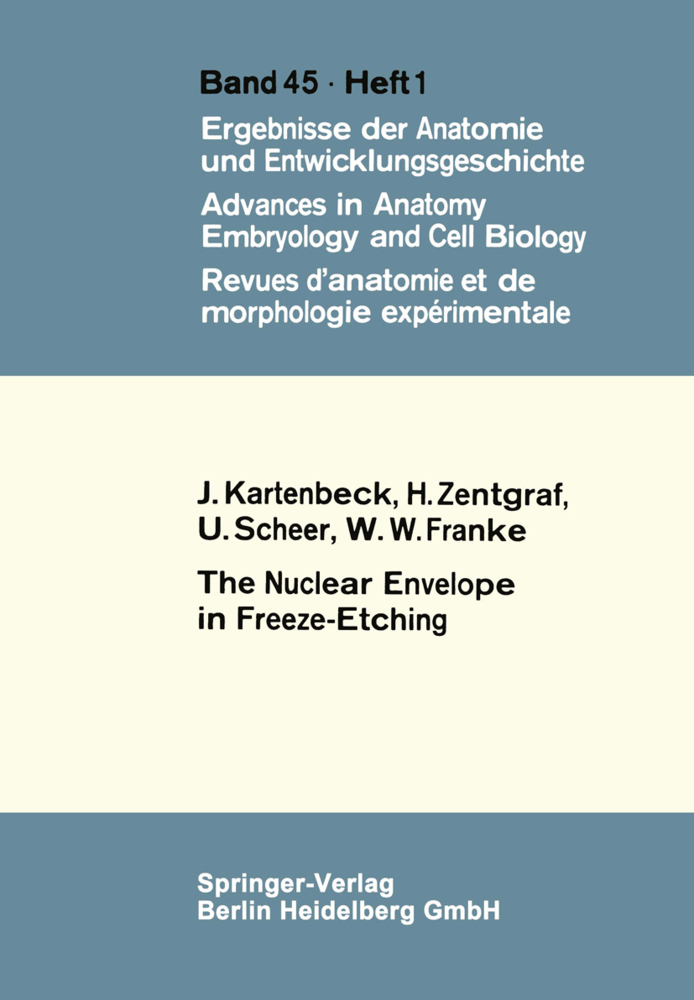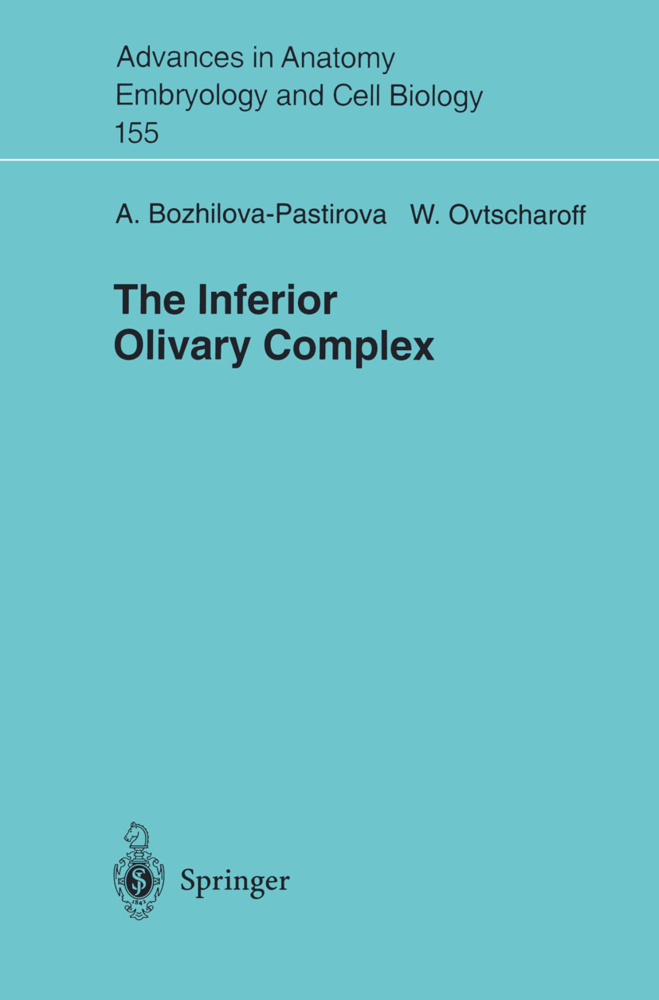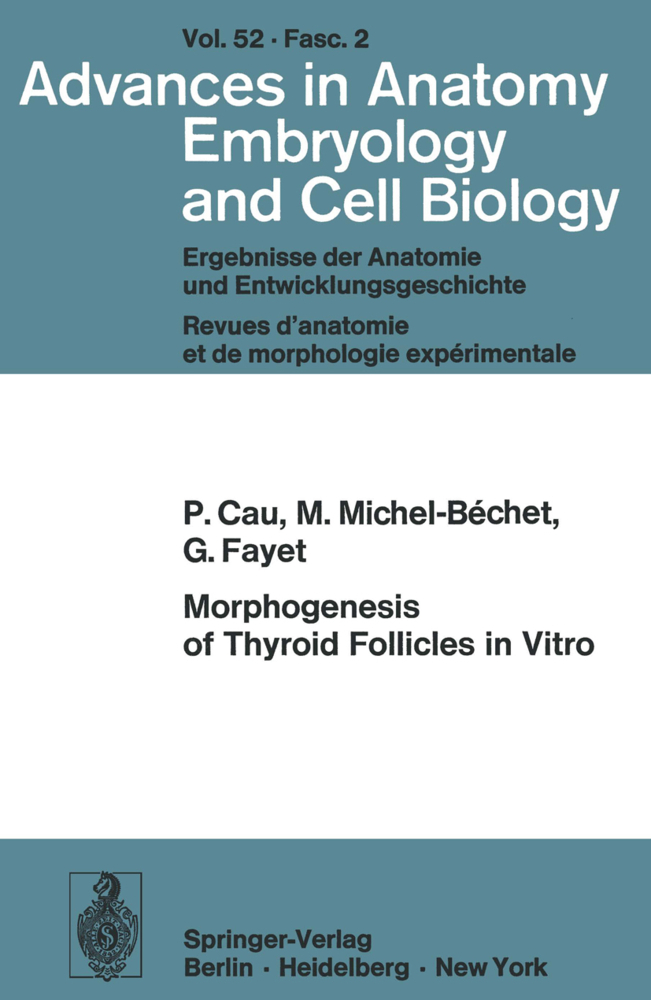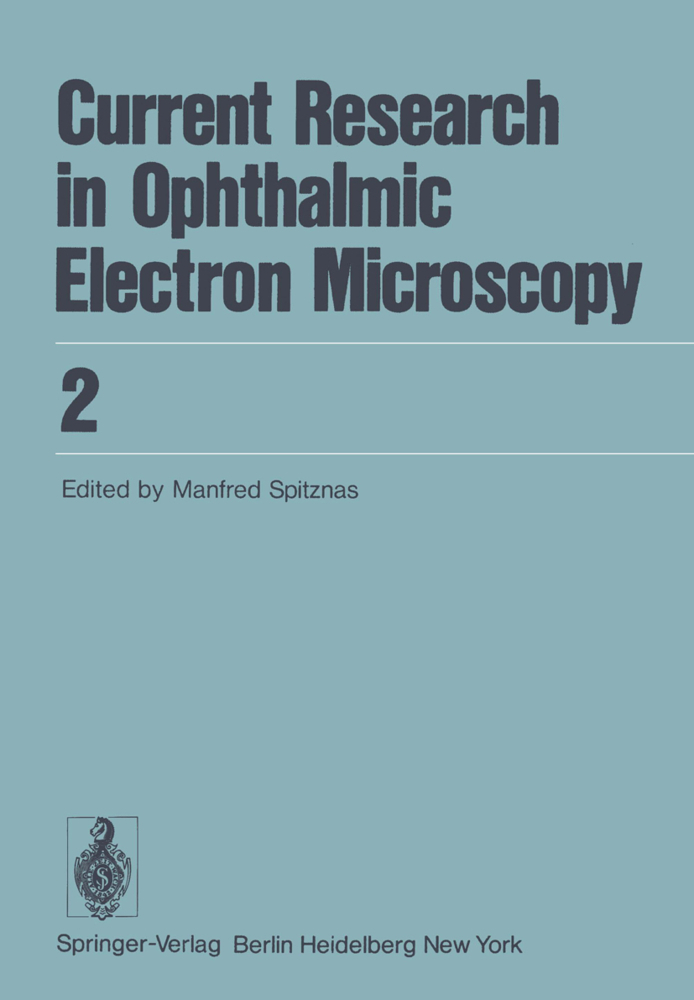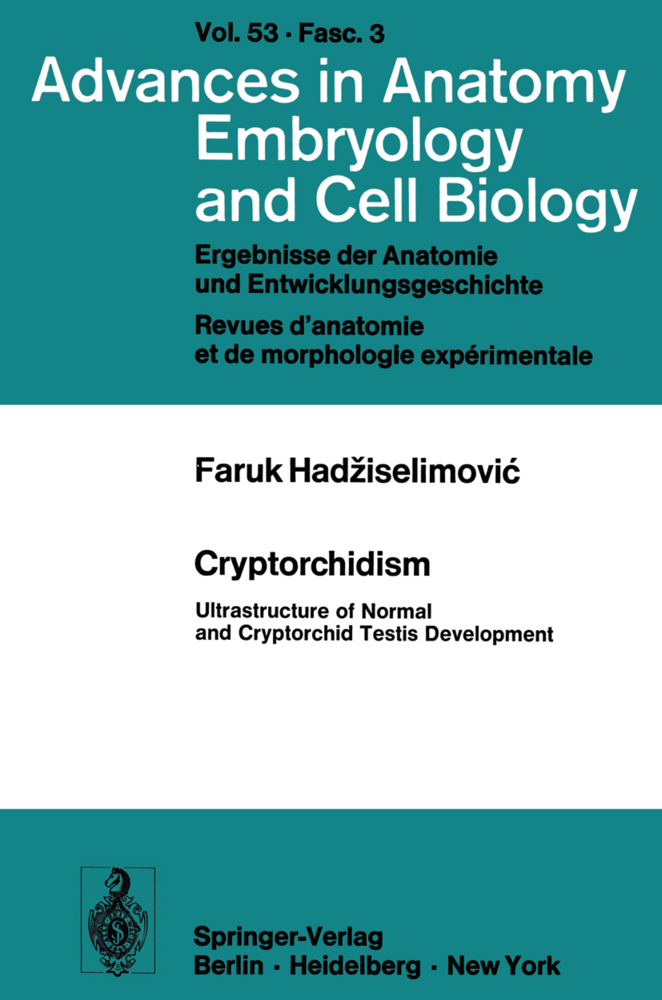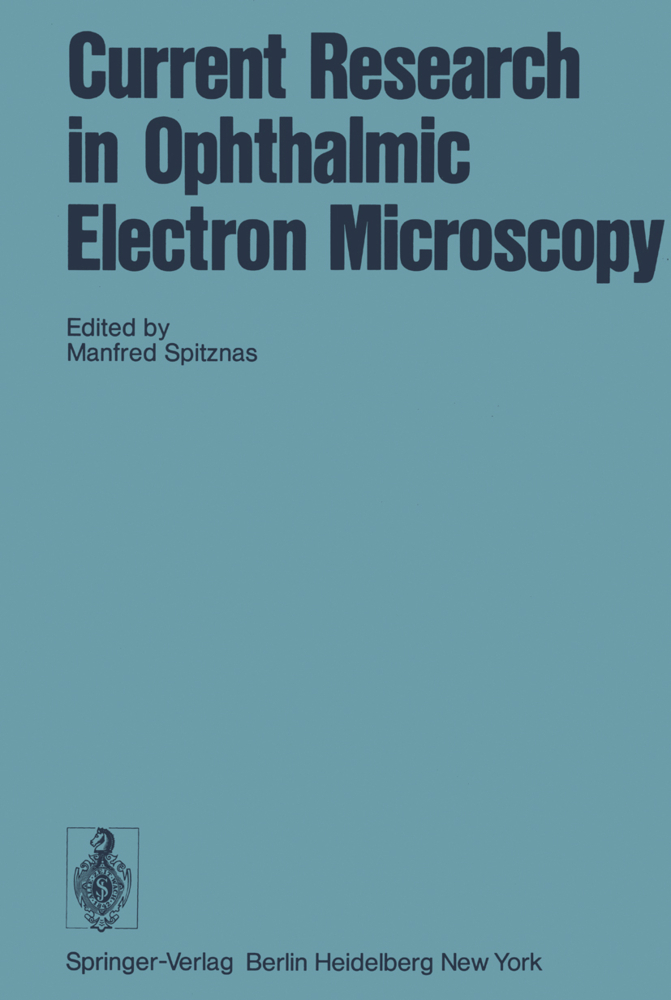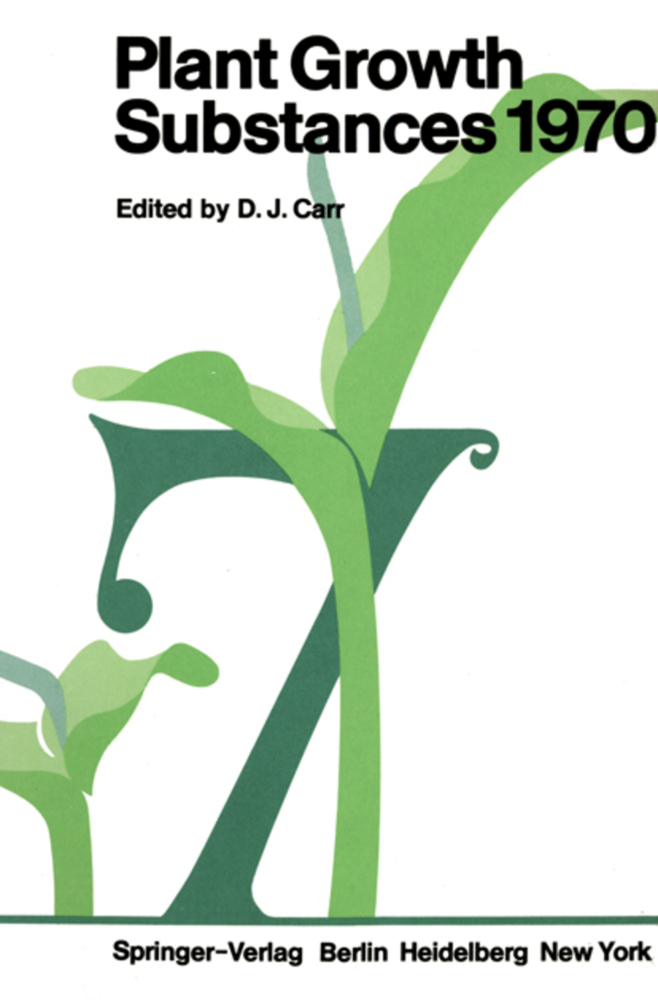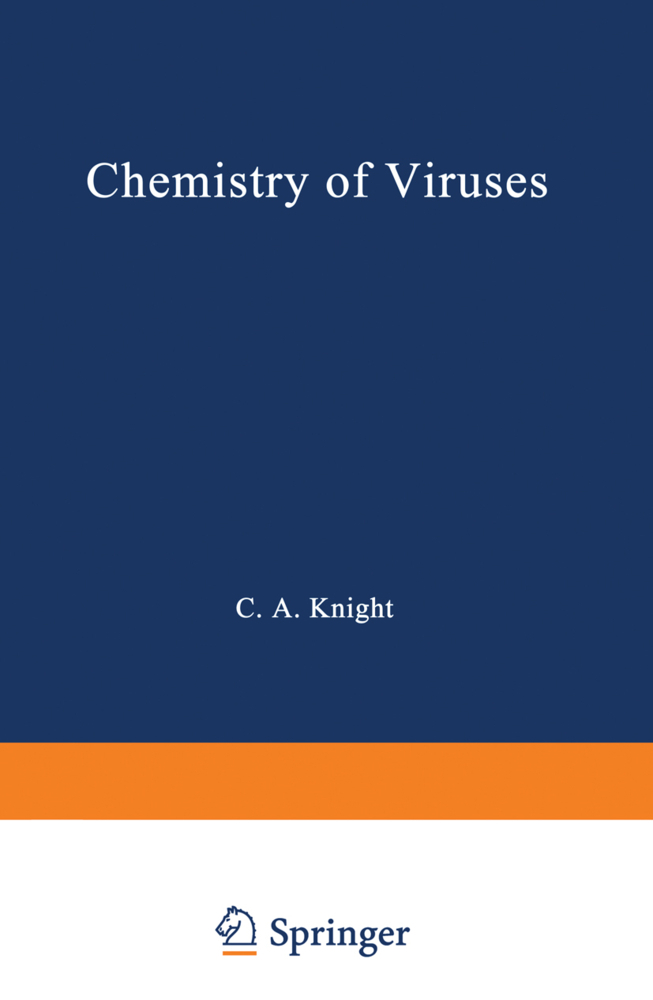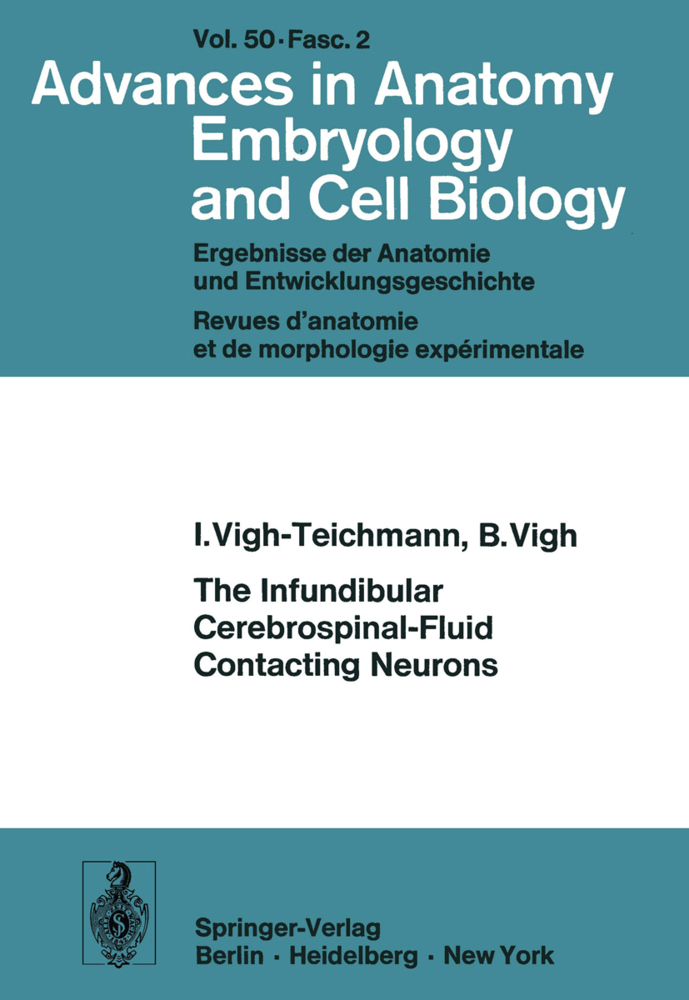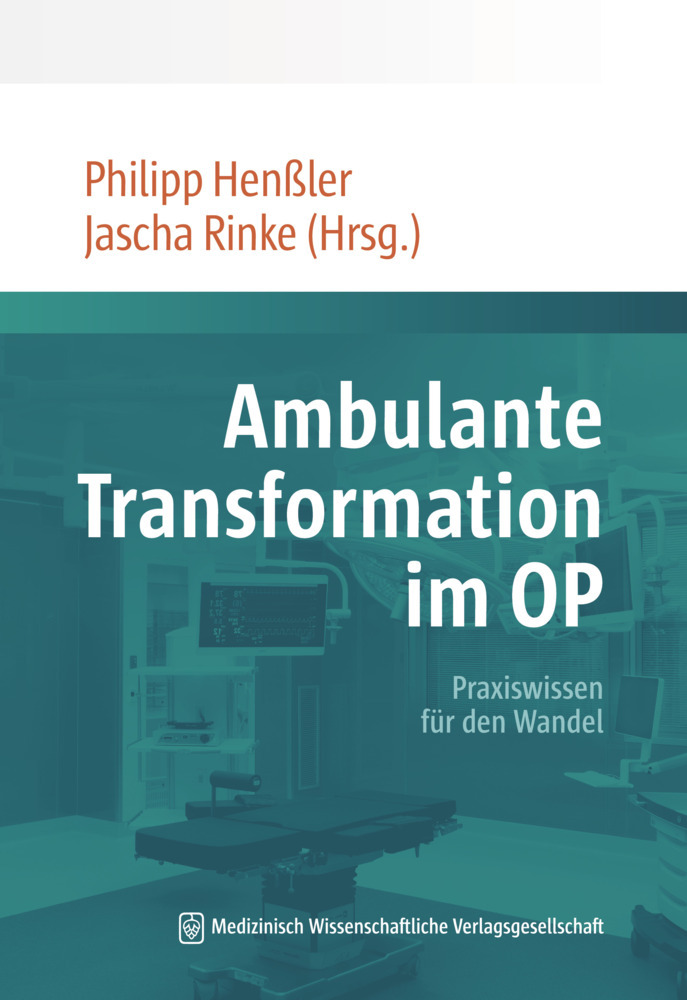The Nuclear Envelope in Freeze-Etching
The Nuclear Envelope in Freeze-Etching
During the past twenty years the structure of the nuclear envelope, and in particular, that of its most distinct elements, the nuclear pore complexes, has been described from thin section electron microscopy (e,g. , Brettschneider, 1952; Hartmann, 1953; Bahr and Beermann, 1954; Watson, 1954; Kautz and de Marsh, 1955; Watson, 1955), from metal-shadowed (e. g. , Callan and Tomlin, 1950; Gall, 1954, 1956) and negatively stained (e. g. , Franke, 1966, 1967; Gall, 1967; Yoo and Bayley, 1967) preparations of isolated nuclear membranes as revealing characte ristics common to euka. ryotic cells in general (recently reviewed, e. g. , in Gouran ton, 1969; Stevens and Andre, 1969; Franke, 1970). In the recent years the freeze-etch technique (Steere, 1957) has proved to be a particularly useful tool in studying membraneous structures (e. g. , Moor and Miihlethaler, 1963; Branton and Moor, 1964; Branton, 1966; Koehler, 1968b; Staehelin, l968a; Northcote, 1968a; Branton, 1969; Moor, 1969a). So this method has especially broadened the knowledge, e. g. , on bacterial membranes (Bayer and Remsen, 1970; Nanninga, 1970), on erythrocyte plasma membranes (Weinstein and Bullivant, 1967; Meyer and Winkelmann, 1970; da Silva and Branton, 1970; Tillack and Marchesi, 1970), on liver cell membranes (Chalcroft and Bullivant, 1970), on Golgi membranes (Werz and Kellner, 1970; Staehelin and Kiermayer, 1970), on synaptic vesicles (Moor et al.
Summary
Acknowledgements
References.
Materials and Methods
Results and DiscussionSummary
Acknowledgements
References.
Kartenbeck, J.
Zentgraf, H.
Scheer, U.
| ISBN | 978-3-540-05538-9 |
|---|---|
| Artikelnummer | 9783540055389 |
| Medientyp | Buch |
| Auflage | Softcover reprint of the original 1st ed. 1971 |
| Copyrightjahr | 1971 |
| Verlag | Springer, Berlin |
| Umfang | 55 Seiten |
| Abbildungen | 55 p. |
| Sprache | Englisch |

